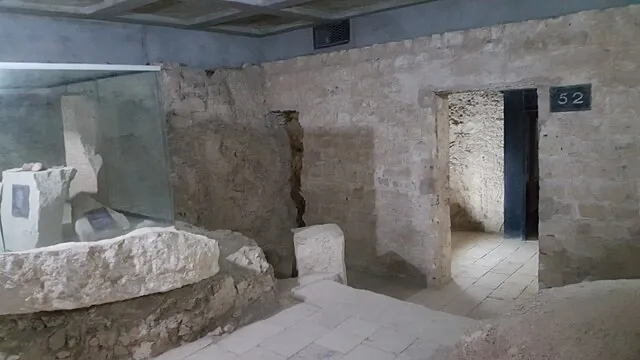The Tomb of Nakht is an ancient Egyptian burial site located in the famed Valley of the Nobles near Luxor. It belongs to Nakht, an 18th Dynasty scribe and astronomer of the god Amun. The tomb is renowned for its vivid wall paintings that depict various aspects of Egyptian life and the afterlife. Discovered in the early 20th century, it has since provided scholars with valuable insights into the religious beliefs, artistic styles, and daily activities of the New Kingdom period.
Get your dose of History via Email
Historical Background of the Tomb of Nakht
The Tomb of Nakht was unearthed by British archaeologist Arthur Weigall in 1907. Weigall was an Inspector-General of Antiquities for the Egyptian government. The tomb’s construction dates back to the reign of Pharaoh Thutmose IV. Nakht himself was a man of considerable importance. He served as an astronomer and a scribe in the temple of Amun, one of the most significant deities in ancient Egypt.
Despite its modest size, the tomb’s significance lies in its well-preserved decorations. These provide a snapshot of Egyptian noble life over 3,000 years ago. The tomb has not been the scene of major historical events. However, it has been a rich source of information for Egyptologists. It has helped them understand the cultural and religious practices of the time.
Over the years, the Tomb of Nakht has remained relatively intact. This is despite the passage of time and the influx of visitors. Its location in the Theban Necropolis, an area with numerous tombs of nobles and officials, has made it a key site for archaeological studies. The tomb’s preservation has allowed for detailed analysis of its art and inscriptions.
While the tomb was designed for Nakht and his wife Tawy, there is evidence that it was later reused. This was a common practice in ancient Egypt. Other individuals were interred within the tomb, as indicated by additional burials found within the chambers. This reuse of tombs adds another layer of history to the site.
The Tomb of Nakht stands out as a testament to the craftsmanship and beliefs of the New Kingdom era. It has not been the site of significant historical events. However, its discovery has been pivotal in understanding the period’s art, religion, and society.
About the Tomb of Nakht
The Tomb of Nakht, officially designated as TT52, is a rock-cut tomb. It features a T-shaped layout typical of 18th Dynasty non-royal tombs. The entrance leads to a transverse hall, followed by a longitudinal hall, and finally, the burial chamber. The walls of the tomb are adorned with vibrant frescoes that have retained much of their original color.
The artistic work within the tomb is of exceptional quality. It depicts Nakht and his wife in various scenes. These include agricultural activities, feasting, and interacting with deities. The paintings also show a variety of wildlife and flora, reflecting the Egyptians’ close relationship with nature.
The construction of the tomb involved cutting into the limestone cliffs of the Theban hills. The inner chambers were then plastered and painted. The choice of colors and the artistic techniques used were highly symbolic and followed strict conventions that had religious and cultural significance.
One of the architectural highlights of the Tomb of Nakht is its astronomical ceiling. It depicts the night sky, which reflects Nakht’s role as an astronomer. The ceiling features a chart of the northern constellations and the figure of the goddess Nut, who symbolizes the sky.
The materials used in the tomb’s construction and decoration were typical of the period. They included limestone for the walls, plaster made from gypsum for the surfaces, and mineral-based pigments for the paintings. The craftsmanship reflects the high level of skill possessed by New Kingdom artists and builders.
Theories and Interpretations
Several theories and interpretations have emerged regarding the Tomb of Nakht. Scholars have debated the significance of the scenes depicted in the tomb’s frescoes. Some suggest they represent an idealized version of Nakht’s life and his aspirations for the afterlife.
The agricultural scenes, for instance, may symbolize fertility and rebirth. This is a common theme in Egyptian funerary art. The presence of banqueting scenes could indicate a desire for eternal sustenance in the afterlife. The depictions of Nakht interacting with deities may reflect his piety and the importance of divine favor for a successful journey to the afterlife.
There are mysteries surrounding the tomb, such as the exact nature of Nakht’s role as an astronomer. The astronomical ceiling suggests a sophisticated understanding of the stars. However, the specifics of his duties and how they influenced his burial remain a topic of research.
Historians have matched the artistic style and inscriptions in the tomb to historical records from the 18th Dynasty. This has helped date the tomb accurately. The dating of the tomb has been further supported by stylistic comparisons with other tombs from the same period.
While no definitive conclusions have been reached about every aspect of the Tomb of Nakht, ongoing research continues to shed light on its purpose and the beliefs it represents. The tomb remains an invaluable resource for understanding ancient Egyptian cosmology and funerary practices.
At a glance
- Country: Egypt
- Civilization: Ancient Egyptian
- Age: 18th Dynasty, New Kingdom, approximately 1400-1350 BC

